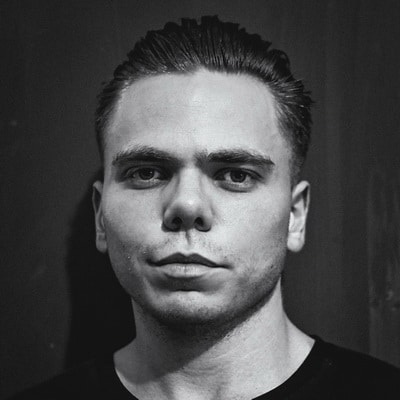How Creatives Are Key in Early Development Stages

User Acquisition (UA) has been data-driven for so long that we managed to forget what happens in the user journey prior to the “data” comes in, especially when launching new mobile games. We forgot that any KPI: click, retention or ROAS can not happen without an ad that speaks to people, motivates them to install your game and displays your unique selling point (USP).
My point here is that, even if we need data to feed our everyday work as User Acquisition Managers (UAMs), we’ve been focusing too long on static KPIs without trying to use creatives to enhance our performances and do better. But launching new games and working closely with the product is the perfect example of how creatives may or may not scale a game.
As I am working as a UA Manager in a lean team with a Unity developer and video editor; I wanted to share how creatives are a key element in the early development phases in my day-to-day job.
Creative is a Need for Success from Prototype to Soft Launch

Prior to speaking about any CPI, creative testing is also a tool to design your game as many hypercasual studios are currently practicing. When you develop a game, you do not have the top concept or best iteration to scale your game; you need to explore and find what works for you. Thus, your only weapon to get true success is to find which creative attracts the market and how the game can best serve the user experience to make the game scale.
Creative is one of the main factors we can really have our hands on to improve our performance and understand our users; manual bids optimization is not enough anymore. As a UAM, I need now to be data and creative oriented in order to shape the success of new games. In my day-to-day job, I am testing hundreds of creatives in order to understand the latest trend but also the gameplay and User Interface that appeal the most to our players.
Uncertainty Lead Innovation
Nothing is lettered into stone, I had to get rid of my certainties and go further in testing and learning, it’s all that matters. Every day, I connect on several platforms to understand trends and challenge my thinking.
Each time a new game is designed, I watch hundreds of creatives of different game genres to understand how it was designed and why. Often, I have noticed innovation comes from what speaks to people.
I’m keeping the game names unknown but there’s a pattern that often pops: when watching these ads, some advertisers that make the game grow fast are testing many parameters. You can see the exact same ad with different backgrounds until one eventually breaks everything. Then, all the creatives follow the same background and stay online for a long moment.
So here is the job when benchmarking: you’re trying the best you can to show the game team how contenders went through some experimental process (understanding, best background, game mechanics, intention and so on) before keeping a set up that’s doing good for them since they keep it live.
The second part is also showing this: Against all odds – or not -, lousy creatives are reaching the top.

Taking advantage of these lousy assets, we can just try fast because they’re easy to produce and eventually we can find some that work great without requiring too much time for our teams to produce: learnings are fast and it’s less bitter to fail.
The second point in benchmarking is also showing game teams how their decisions for the game can influence the final UA costs. Art direction, theme and taxonomy are 3 levers that have a huge influence on the ARPI(Average revenue per install) and the costs you can expect. 2D merge will be way cheaper than a 3D one or every RPG (Role-playing game) you can pull. In the end, it needs to be addressed since the whole process is about giving your team the best insights so they can make decisions with the most relevant elements.
Iteration Can Truly Be Endless Until You Reach Your Goal
Getting THE best creative is a matter of patience and time. In my daily job, I work closely with product marketing managers and game managers to understand the strength of the game.
Once they share with me what is the strongest experience of the gameplay, I then have the knowledge to align my benchmark knowledge to their product knowledge to design creatives that speak to the player. My goal at the early stage is not to mislead the player but to advertise the better way on the game in order to get the best retention and cost per user acquisition.
On my way to achieving this goal I am trying new things, a new voice, new text; new everything. When it works (and it often will); I gather the learning and keep going.
The Art of Getting Learning Without Ego in Creative Testing
As for the prototype, for one creative that wins, hundreds are going to be killed. I then communicate with the different teams about my learning, especially with product managers and artists to go through it again. Thus, it is together as a team that we move forward on creative without ego to always deliver what speaks to our users.
The idea behind this being that after some time, you should be able to have the best creatives possible from a new concept and then you can keep on digging further.
To Wrap It Up; A Bit of Maths on Money Savings!
That being said, what benefits do we harvest from such a painful path – recall that you’ll fail many times? We’ll do the maths for you.
Let’s say that you spend $1K per day on your campaign with a $1 CPI (Cost per install) and you’re hardly even caping. You’re having 1K users per day, which might be convenient.
But if you find that golden ticket, and cut your CPI by 20%, it’s now $0.8 so you’re now having 1250 users per day for the same budget. If you cut it by half, it’s $0.5 and you’re having 2K users for the same amount of money. That’s the whole point.
Even more, since you’ve been testing and learning, you can launch new concepts and be the closest to sure that you’ll have at least a very good creative if the concept is right: here you are with two benefits from the same work.
Even greater: Now you’ve decreased your costs and you’re capping, you can start to scale up your campaigns and reach another peak.










